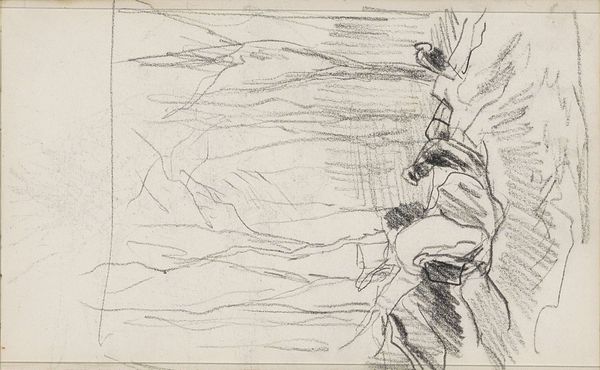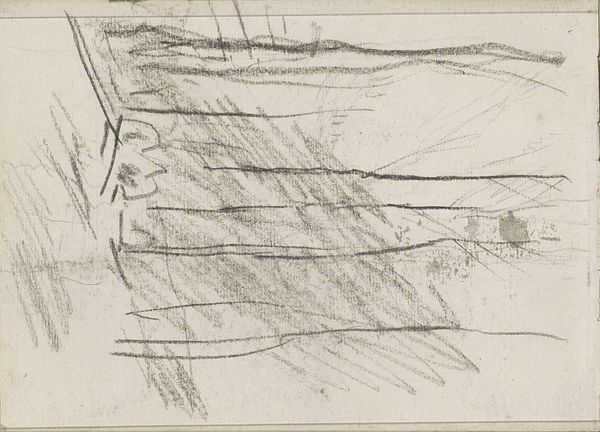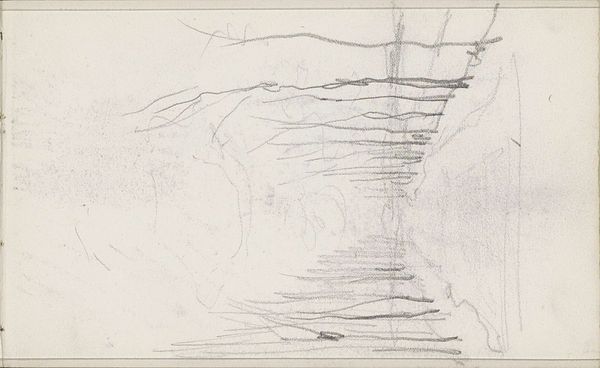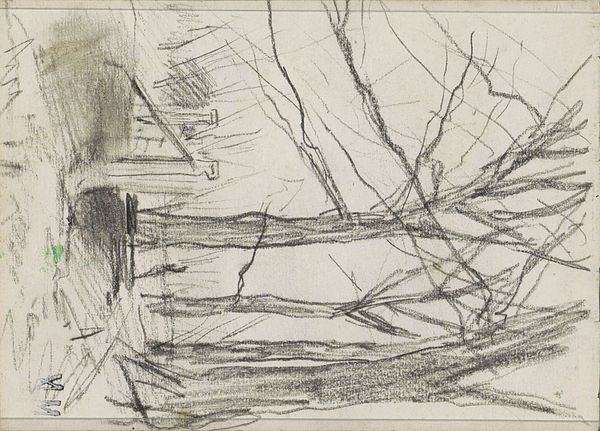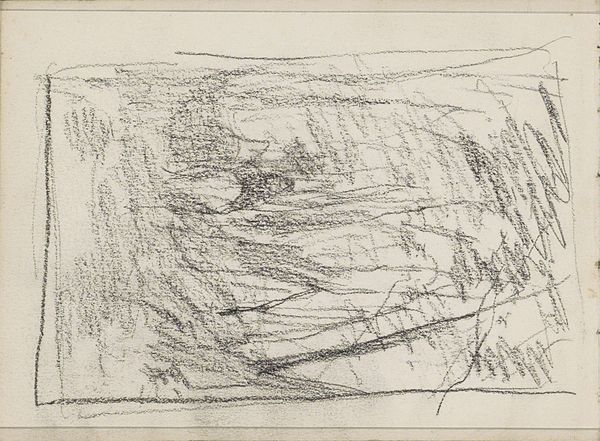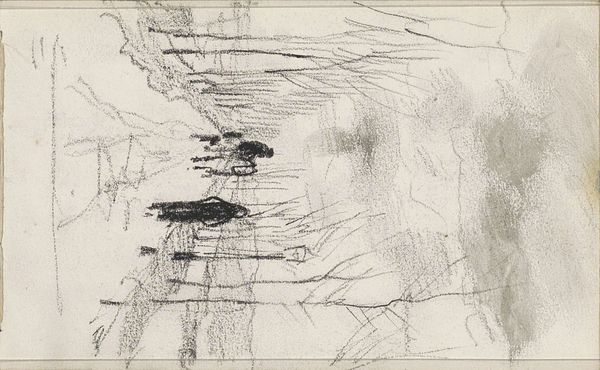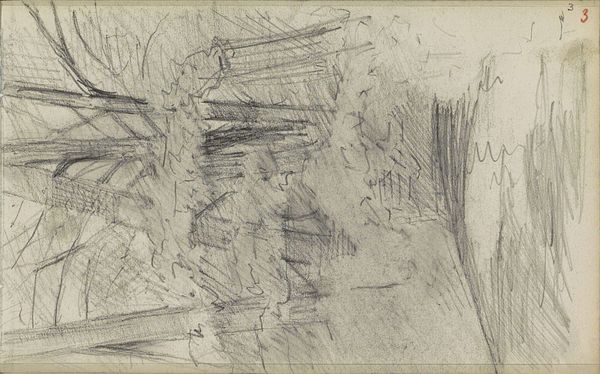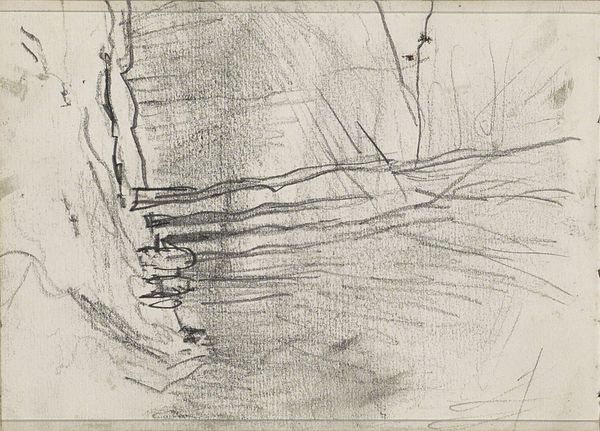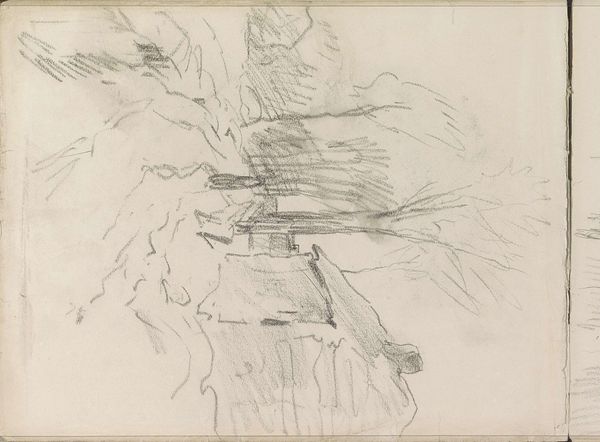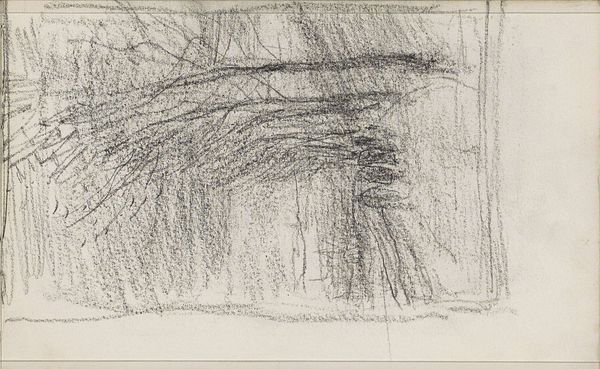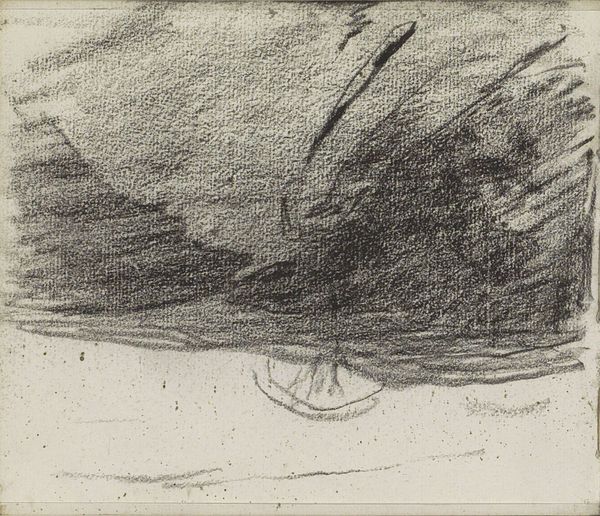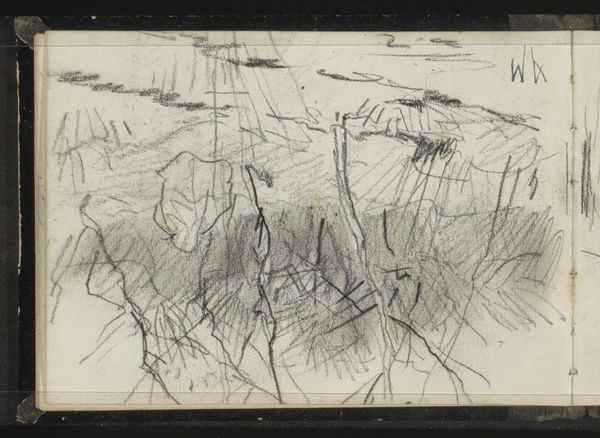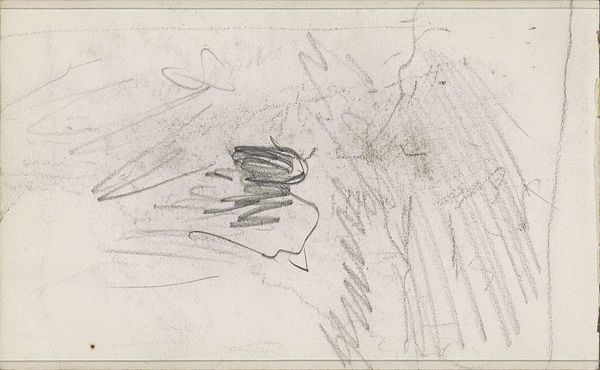
Copyright: Rijks Museum: Open Domain
Curator: Ah, yes, this is "Rij boomstammen," or "Row of Tree Trunks," a pencil and graphite drawing by Anton Mauve. It dates from between 1848 and 1888. Editor: The first thing that hits me is its sparseness. It feels… unfinished, almost like a fleeting impression jotted down. Those quick, scribbled lines—what's the effect of that brevity, you think? Curator: Well, Mauve was part of the Hague School, and they aimed to capture the atmosphere and light of the Dutch landscape. Sketching en plein air like this was central to their method. They weren't about photorealistic depiction; they wanted the essence. It aligns him with a certain strand of realism. Editor: Realism, sure, but there's also a romance in that simplification, right? The raw lines practically tremble with a feeling, like he caught a glimpse of something wild and immediately had to trap it on paper before it vanished. Curator: Precisely. And notice how the horizon line is almost absent. The logs dominate, practically asserting their presence against the softer, undefined background. It makes me wonder about resource use, about the labor of timber, and about who would be observing logs as a thing to paint... Editor: So, these logs, are they floating or grounded? It's fascinating how little context we're given. Are they a barrier, a resource, or something else? I love how such a simple sketch stirs such expansive questioning. I mean I guess most timber is either building houses or coffins, in a way... Curator: The sketch form frees the artist, and by extension, the viewer, to focus on those very questions. And given Mauve’s connections—he was, after all, van Gogh’s cousin-in-law and an early mentor—it prompts me to think about the legacy of close observation and social engagement inherent in art. Editor: It's as if he's saying, "Look closer." It reminds me to pay attention to the overlooked corners of our environment. What hidden poetry might we be missing, and where does that take us ethically? Curator: Exactly. Mauve gives us these bare facts with which to ruminate. And you get the feeling you’re staring at one stage in the resource chain. Fascinating. Editor: Yeah. Next time I see a pile of timber I'm sure I'll see things very differently.
Comments
No comments
Be the first to comment and join the conversation on the ultimate creative platform.
